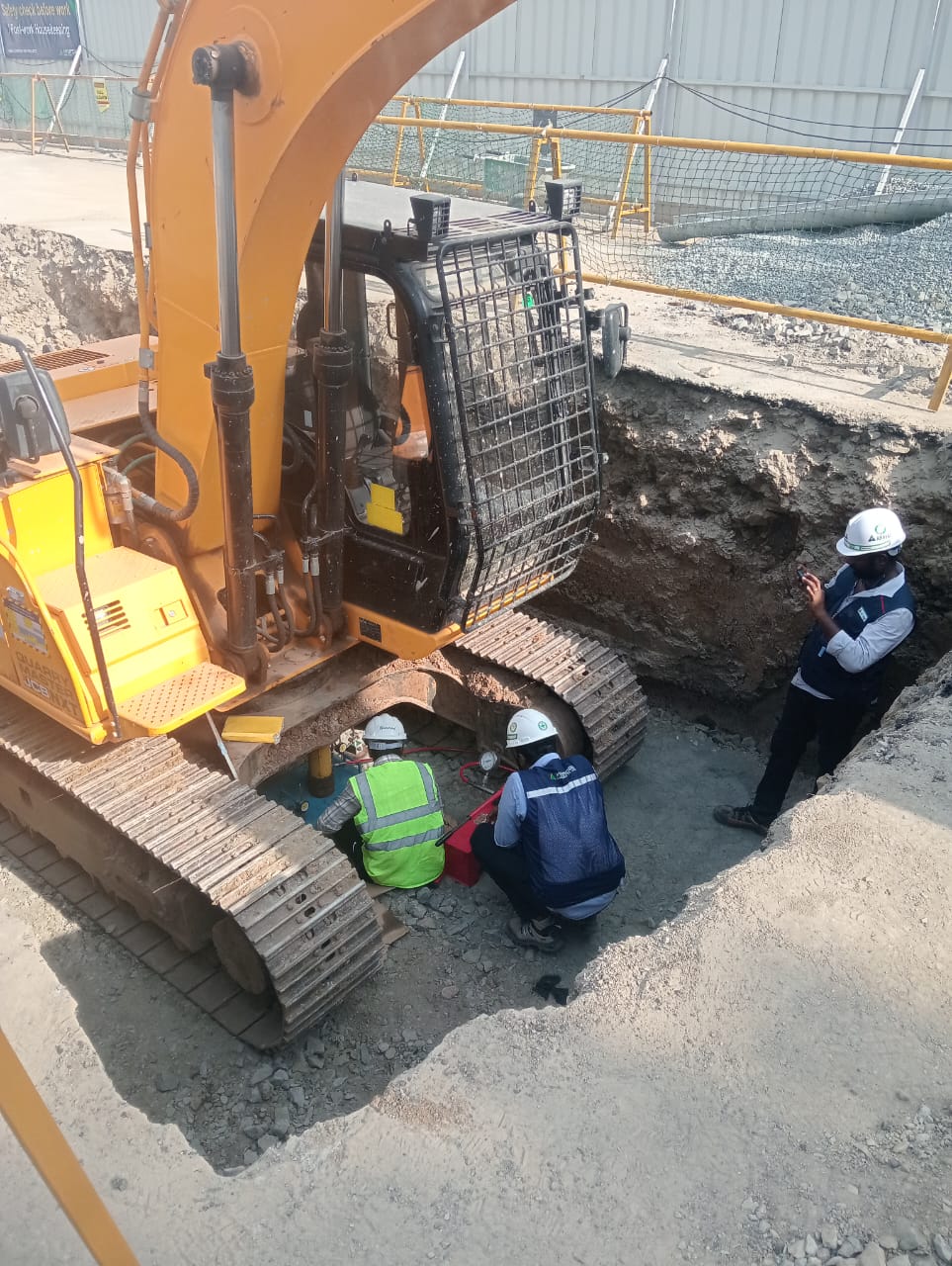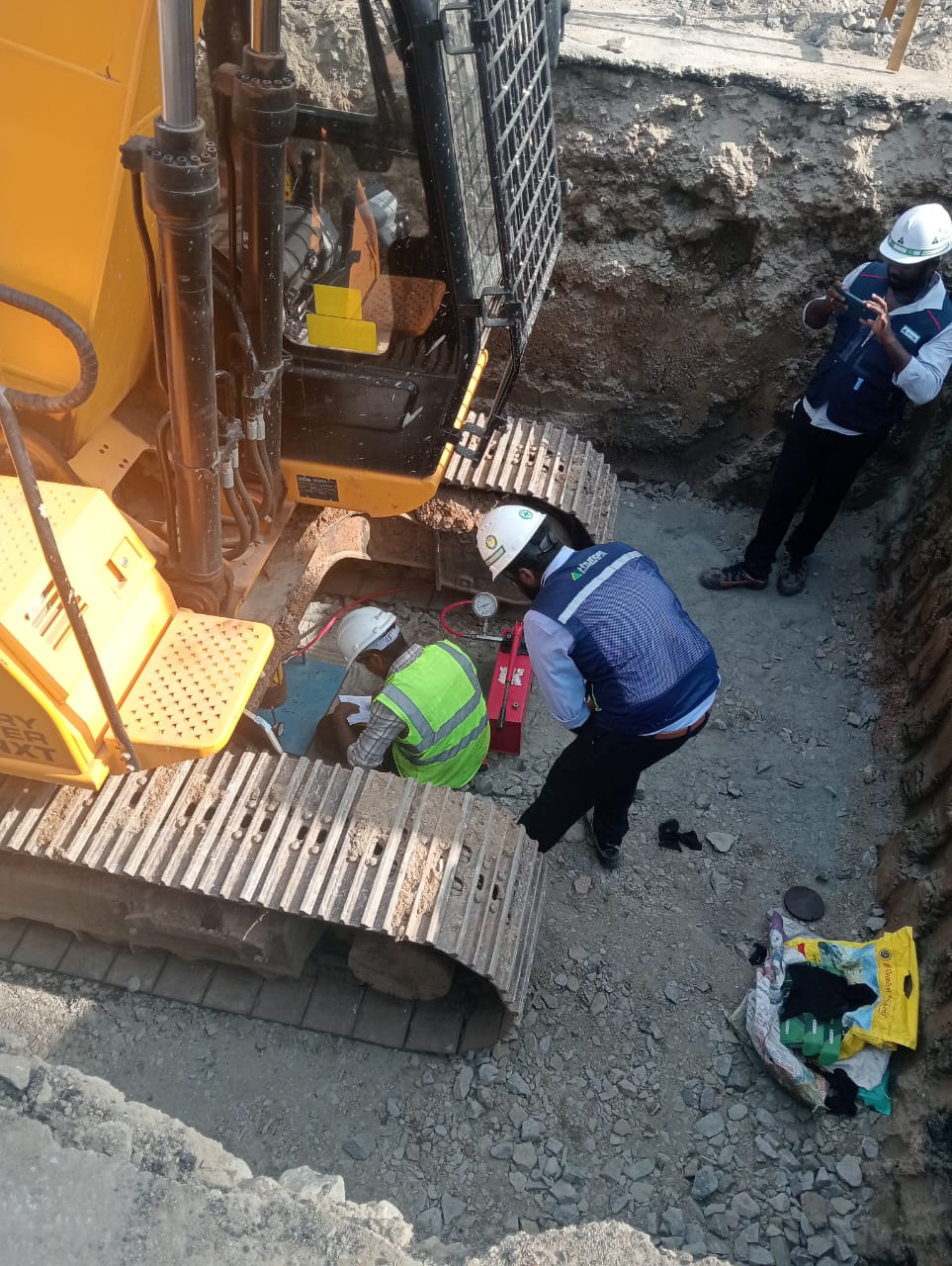Geotechnical Investigation
- Plate Load Test
- Earth Resitivity Test
- Field Density Test
- Block vibration test
- Cross hole seismic test
- Pressure meter test:
- Static cone penetration test
- Dynamic cone penetration test
- Field vane shear test
- Other Field Test
- GPR survey
a) Plate Load Test
The Plate Bearing Test (or Plate Loading Test) is an insitu load bearing test of soil used for determining the ultimate bearing capacity of the ground and the likely settlement under a given load.... The Plate Bearing Test is normally carried out at foundation level, either on the surface or in a shallow pit.



b) Earth Resistivity Test
Earth resistivity is the measurement of the specific resistance of a given material.... The soil resistivity test spaces four (4) probes out at equal distances to approximate the depth of the soil to be tested. Readings are taken at different spacings as technical per standard.

c) Field Density Test
FDT is soil compaction test is a Quality Control test carried out at site for knowing the increased density or compaction achieved at site on the soil layer. FDT is a part of in-situ soil testing which is one of the subjects of geotechnical engineering

D) Block vibration test
These tests are performed as per IS 5249 - 1992, Determination of Dynamic properties of soil – Method of test. A plain cement concrete block of M-15 concrete should be constructed in a test pit of size about 3m x 6m. The size of the block should be selected depending upon the sub-soil conditions. In ordinary soils it may be 1 m x 1 m x 1.5 m and in dense soils it may be 0.75 m x 0.75 m x 1 m. The concrete block should be cured for at least 15 days before testing. Foundation bolts should be embedded into the concrete block at the time of testing for fixing the oscillator assembly.

E) Cross hole seismic test
Cross-Hole testing consists of measuring the travel time of compression (P) and shear (S) seismic waves between several boreholes. It enables us to determine, depending of the depth, their seismic velocities, Vp and Vs, as well as geodynamic parameters (Young's modulus E, shear modulus G, and Poisson's ratio n). These tests are conducted to determine the following dynamic parameters.
Three boreholes will be drilled for this purpose, up to 10m below ground level. Sound waves generated by a hammer placed at one borehole will be observed by the receivers placed at the other two boreholes drilled in triangular pattern.
The observed results are used for the calculation of the dynamic parameters

F) Pressure meter test
The pressure meter test is an in-situ testing method used to determine the stress-strain response of the soil/rock. The test procedure involves drilling a borehole and placing a pressure meter probe to the required depth. The probe consists of three inflatable cells which are filled with water and gas. Elastic modulus of soil or rock layers could be estimated by this method.

G) Static cone penetration test
The cone penetration or cone penetrometer test (CPT) is a method used to determine the geotechnical engineering properties of soils and delineating soil stratigraphy. It was initially developed in the 1950s at the Dutch Laboratory for Soil Mechanics in Delft to investigate soft soils.

H) Dynamic cone penetration test
The Dynamic Cone Penetrometer (DCPT) is used to determine underlying soil strength by measuring the penetration of the device into the soil after each hammer blow. Conducting a DCP test involves raising and dropping the hammer to drive the cone on the lower shaft through the underlying soil layers.

I) Field vane shear test
The Vane shear tests are conducted to observe directly the in-situ cohesive strength (apparent cohesion) of the saturated clayey soil, existing in very soft to firm consistencies. It shall be conducted as per IS 4434. The Vane blade will be inserted in to the borehole up to the top of clay layer using guide rods, while a torque measuring system placed at the top of the borehole will measure the torque, in turn provide the cohesion of saturated clay soil.

Other Field Test

Field Permeability Test

Cross hole Test

Downhole test

Plate load test

Static Cone Penetrometer Test

Block Vibration Test

Pile Load Test
Ground-penetrating radar (GPR)
Ground-penetrating radar (GPR) is a geophysical method that uses radar pulses to image the subsurface. It is a non-intrusive method of surveying the sub-surface to investigate underground utilities such as concrete, asphalt, metals, pipes, cables or masonry. This nondestructive method uses electromagnetic radiation in the microwave band (UHF/VHF frequencies) of the radio spectrum, and detects the reflected signals from subsurface structures. GPR can have applications in a variety of media, including rock, soil, ice, fresh water, pavements and structures. In the right conditions, practitioners can use GPR to detect subsurface objects, changes in material properties, and voids and cracks.
